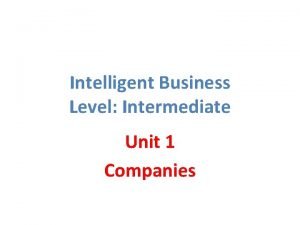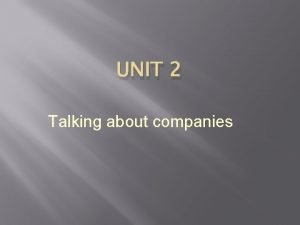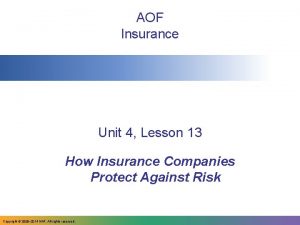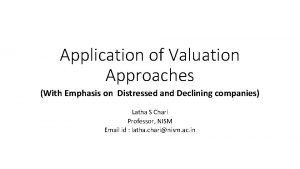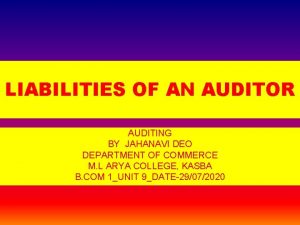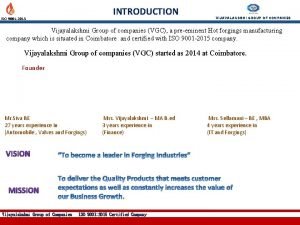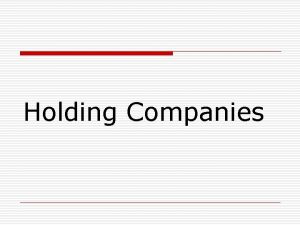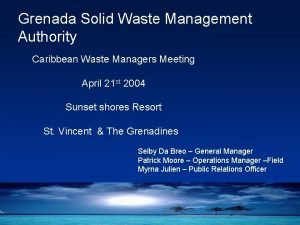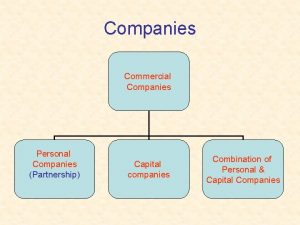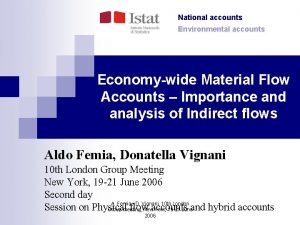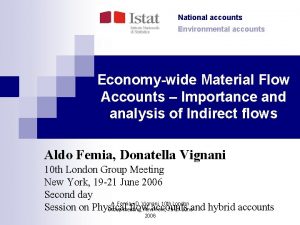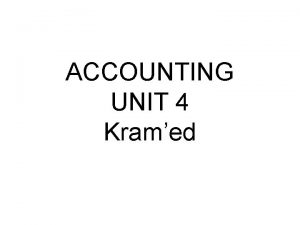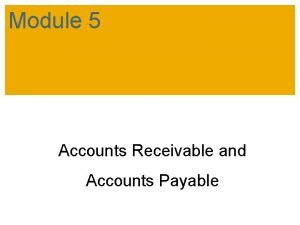Unit V Accounts of Insurance Companies and Insurance


























- Slides: 26

Unit – V Accounts of Insurance Companies and Insurance Claims

Introduction • Insurance is an agreement to make the loss or damage suffered by a person good by another person for consideration called Premium. • The person whose risk is covered is called Insured. • The company or the party which insures is called an Insurer. • The documents that give the terms and conditions of the insurance is an Insurance Policy.

Classification of Insurance • Insurance is classified into two types. They are q Life Insurance : As the name suggests, life insurance contract covers the risk associated with the life of human beings. These policies are generally long term policies. q General Insurance : On the other hand, all the insurances other than life are covered under general insurance. These contracts are usually made for one year. Examples: Marine insurance, Fire Insurance, Accidental, crop, Burglary Insurance etc.










Terms to understand • First year Premium: The premium • Claims: It is any amount to be paid by the insurance company to the policyholders, on the received incase of Life insurance death or maturity. for the first time. • Renewal premium: the premium received for the subsequent years. • Single Premium: Premium that is paid only once, at the time of taking the policy. • Annuity: It is the annual payment that is paid by the insurance company for the lumpsum amount received in the form of consideration. • Surrender: The sale of the policy by the insured to the insurance company before its maturity.

Cont. . • Reinsurance: When an insurance company insures its risk with another insurance company mainly to reduce the risk is called reinsurance. • Premium on reinsurance ceded: The premium payable by the original insurer to the reinsurer is called Premium on Reinsurance ceded. • Premium on Reinsurance accepted: The premium receivable by the reinsurer from the original insurer is called Premium on Reinsurance accepted. • Claims on reinsurance ceded: It is the claim amount recieved or recievable from the reinsurer for reinsurance ceded.

Cont. . • Claims on Reinsurance accepted: It is the amount paid or to be paid to the other insurers for the reinsurance accepted. • Commission on Reinsurance ceded: It is the commission that is recieved by the original insurer for transfering the business to the reinsurer. • Commission on Reinsurance accepted: It is the commission that is paid to the original insurer on accepting such bussiness thats transfered to them.

• According to IRDA regulations 2002 the following accounts are to be prepared for the general insurance contracts. ü Revenue Account (Form B – RA) ü Profit and Loss Account (Form B – PL) ü Balance Sheet (Form B – BS)









Insurance claims • Incase of a fire accident, all the assets like Land & Buildings, Plant & Machinery, Furniture, stock etc. , shall be destroyed. • Incase of stock, it becomes necessary to calculate the value of stock in hand at the time of fire unlike other assets which have records maintained in the books of accounts • Value of the stock destroyed by fire is calculated by preparing a Memorandum Trading Account till the date of fire. • The amount of claim from the insurance company is calculated by deducting the salvaged stock from the closing stock.

Memorandum Trading Account Particulars Amount(Rs. ) Particulars Amount (Rs. ) To opening stock XXX By sales less returns XXX To Purchases less returns XXX By closing stock (balancing figure) XXX To Wages (+) outstanding XXX To other Manufacturing expenses XXX To Gross Profit c/d XXXX
 Alan franklin
Alan franklin Sweden insurance companies
Sweden insurance companies Company structure unit 3
Company structure unit 3 A trendy new high-tech corporation
A trendy new high-tech corporation Unit 2 companies
Unit 2 companies Elements of fire insurance contract
Elements of fire insurance contract Unit 6 review questions
Unit 6 review questions Unit 2 lesson 3 health insurance and financial planning
Unit 2 lesson 3 health insurance and financial planning Economics unit 2 lesson 7
Economics unit 2 lesson 7 Public companies in trinidad and tobago
Public companies in trinidad and tobago Logos and slogans of famous companies
Logos and slogans of famous companies Valuing distressed and declining companies
Valuing distressed and declining companies Waste service lindsay
Waste service lindsay Valuing private companies
Valuing private companies Social media for asset managers
Social media for asset managers Related and unrelated diversification
Related and unrelated diversification People leave bosses not companies
People leave bosses not companies Golden rule of framing the prospectus means
Golden rule of framing the prospectus means Melaleuca vs amway products
Melaleuca vs amway products 9821271680
9821271680 Http://zapatopi.net/treeoctopus
Http://zapatopi.net/treeoctopus Criminal liabilities of an auditor
Criminal liabilities of an auditor Top semiconductor ip companies
Top semiconductor ip companies Vijayalakshmi forgings
Vijayalakshmi forgings What is the purpose of a holding company
What is the purpose of a holding company Grenada trash services
Grenada trash services Finance companies generally:
Finance companies generally:



